Did the “September Scare” just begin for the Australian share market?
Seasonal analysis studies how prices change at different times of the year. “Seasonality” is the tendency for an asset’s price to move in a particular way (up, down or sideways) over a period of time – from day of the week, to week or month of the year, to season of the year (e.g., summer, winter etc.).
Seasonality is particularly prevalent in agricultural commodities that are grown and sent to market at regular times. It’s also prevalent in commodities that are inputs in manufacturing processes that also depend on seasonal weather patterns, such as steel manufacturing in China. The latter also makes the price of iron ore highly seasonal (but this is a topic for another article!).
Stock markets are also highly seasonal, particularly here in Australia, where the timing of earnings releases and the dividends that typically follow them have a significant impact on investor behaviour.
Other key seasonal trends have long been embedded in the investor psyche, and for this reason, they may experience a degree of self-fulfillment. “Sell in May and go away” and the “Santa Rally” are perhaps the two best-known examples.
But there is another time of the year that seems to put investors on edge: September and October. Most of the major stock market crashes, including the 1929 and 1987 crashes and the collapse of Lehman Brothers in 2007, occurred in these two months.
In this article, I’ll show you exactly what typically happens to Australian shares in September and October over several lookback periods, and taking dividends into account. Let’s see just how bad things might get over these next two months. (Note: You will not find data this detailed for the Australian share market anywhere else!)
Let the September Scare begin!
It’s not just an old stock market wives’ tale: September really is a poor month for Aussie stocks. The charts below show monthly seasonality for the Australian share market as represented by the performance of the All Ordinaries Index (XAO) over the last 30 years, 20 years, 10 years, and five years.
I have deliberately chosen the XAO over the typical benchmark, the S&P/ASX200, because it has a greater price history and it also contains a greater number of stocks (around 500 versus 200). A greater price history is an obvious advantage when looking at longer-term seasonal trends, and referencing a greater number of stocks should in theory provide a better representation of what’s actually happening in the Australian share market.
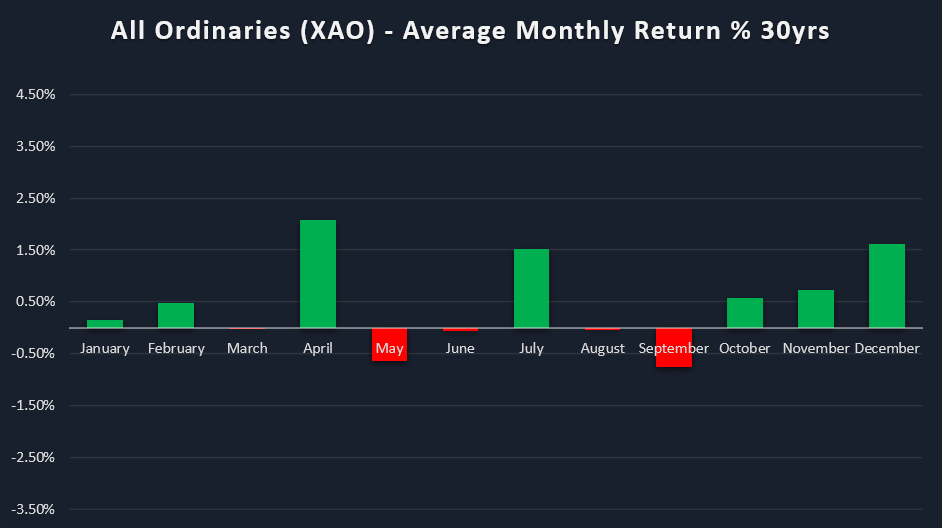
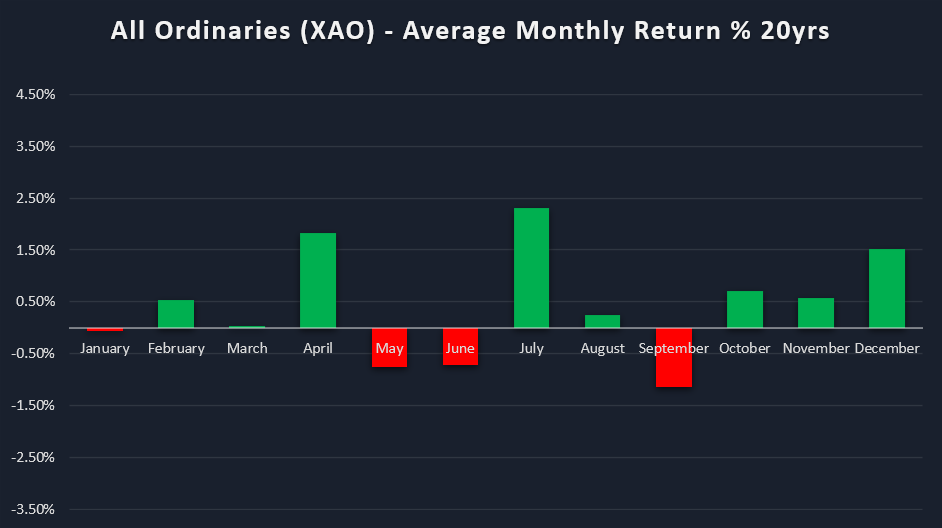
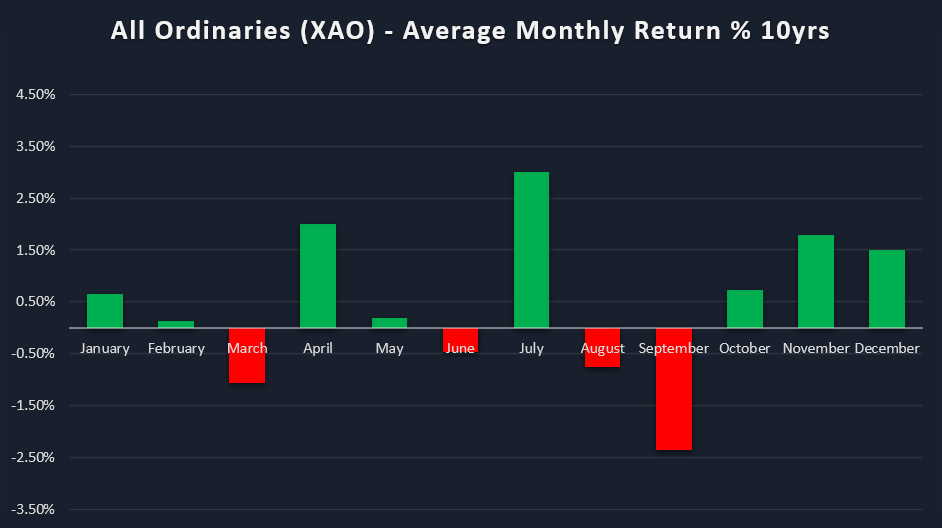
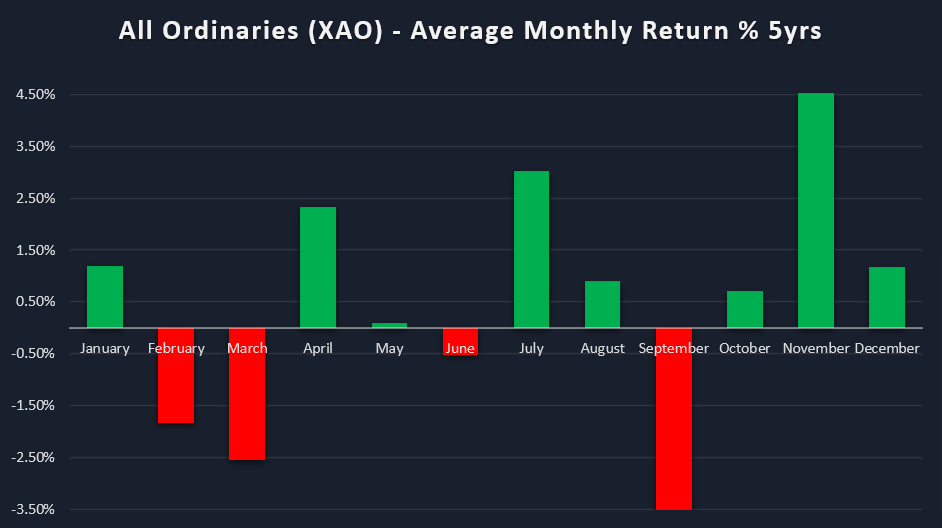
Focusing on the seasonality for September and October (please see my other seasonality articles for other times of the year), you will see that September has certainly lived up to its reputation as the worst month of the year for Aussie stocks. Also, September has delivered increasingly poor performance over more recent lookback periods.

Table 1 summarises the damage typically done in September, as well as displaying September’s “Reliability”. This is the percentage of times September delivered a gain of any magnitude. So, for example, out of the last 10 years, just one September was an up month – meaning nine were down! Over the last 30 years, more often than not (i.e., 55.2% of the time), September has been a down month.
In terms of the magnitude of September declines, over the last 30 years, September has knocked an average of 0.73% off Aussie share prices. This blows out to a disturbing 4.35% on average over the last five years with a 100% loss reliability. Let’s hope this year isn’t an “average” one of those – certainly, today’s 2% loss (so far) is not a great start.
It might surprise you that October isn’t a bad month for the Australian share market. The average October over the various lookback periods is profitable, delivering returns of around 0.7%, and October is usually reliable, delivering a gain of any magnitude 60-67% of the time.
Ok, it’s bad, but it’s not that bad…
I’ve kind of led you down the garden path a little so far, but this is deliberate in order to prove a point. Seasonal data that doesn’t take into account dividends is useless. Unfortunately, this is exactly what is typically quoted in the mainstream media to point to the prevalence of seasonal trends.
The average dividend yield for the Australian stock market over the last 30 years is around 4%. When a stock goes ex-dividend, it typically falls by the amount of the dividend. Those falls added up translate into a lower XAO price over time. Just looking at the XAO will understate the true performance of the Australian share market in our seasonal data.
But dividends aren’t typically paid in Australia uniformly throughout the year – they are usually paid after first half and second half earnings seasons in February and August. This means that Australian dividends are typically paid anywhere between February and April, and August and October.
Now throw in the fact that some of our major banking stocks (e.g. ANZ Group (ASX: ANZ) Westpac Banking Corp. (ASX: WBC), and National Australia Bank (ASX: NAB)) have a September fiscal year end, and therefore pay dividends in May and November – and it can significantly skew the performance of seasonal data that doesn’t account for dividends.
Let’s take another look at the seasonal data for the Australian share market, but this time taking into account dividends. Enter the All Ordinaries Total Return Index (XAOA). This index tracks the performance of All Ordinaries constituents, but adds back any dividends they pay – hence the name “Total Return Index”.
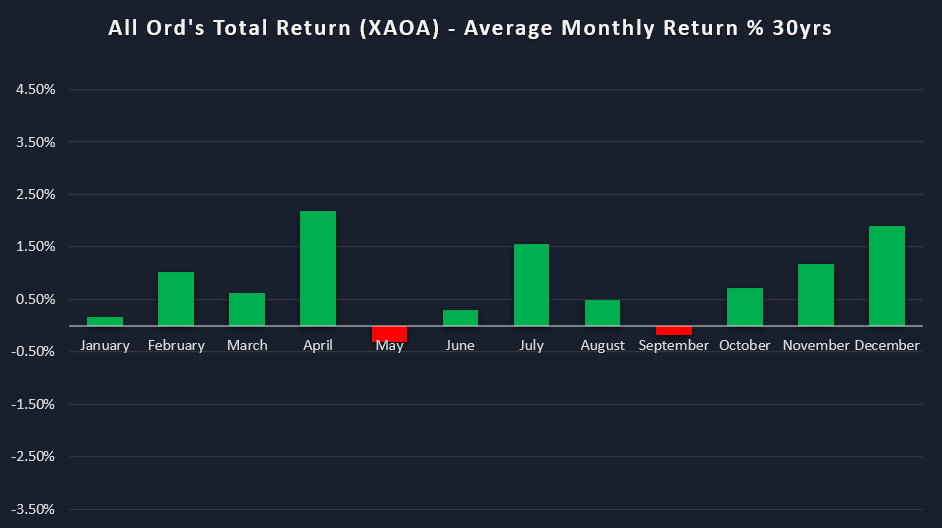
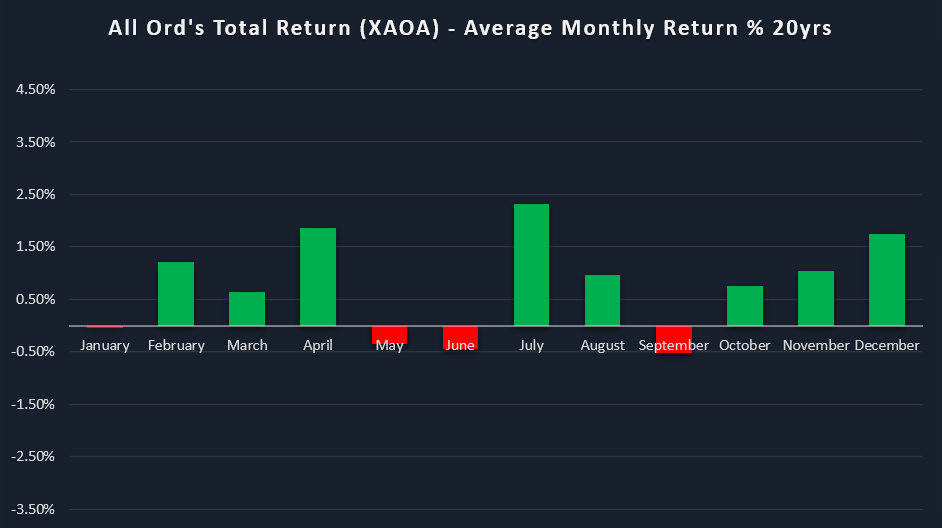
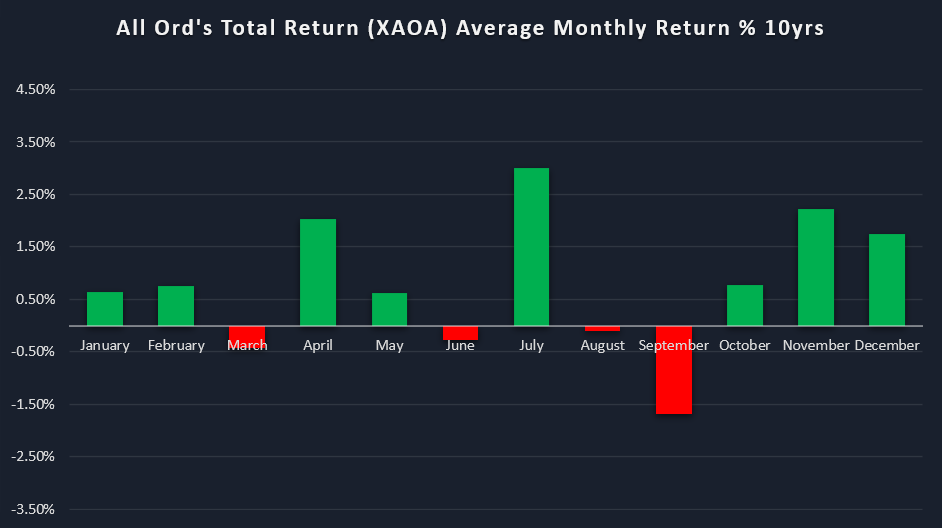
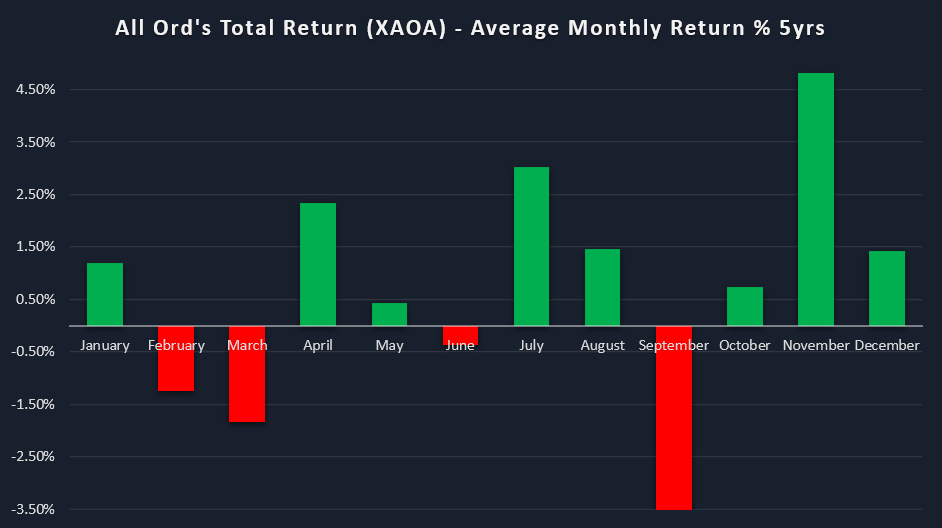
Compare the above charts for the XAO and the XAOA, as well as Table 2 below which summarises the stats for September and October average total return and reliability. It should become clear just how big an impact dividends have on seasonal performance.
September is still a down month on average over all lookback periods, but it’s no longer the worst month of the year over the last 30 years (May is worse), and it’s not materially worse over 20 years. It remains, however, clearly the worst month of the year over the five and 10 year lookbacks, and while average losses of 1.69% and 3.56% respectively are no picnic – they’re far better than those in the corresponding lookback periods for the XAO.

September’s reliability also improves. It’s no longer likely to be a down month over the 20 and 30 year lookbacks, but its reliability over the five and 10 year lookback periods is still dismal – and it was still down five out of the last five – even after accounting for dividends.
October’s total return performance also improves, as ex-dividend dates do extend from August earnings season into this month, but the impact here is far more modest. October’s reliability is unchanged.
Conclusions regarding September and October seasonality
Seasonal analysis is like driving by only looking in the rearview mirror. We should always be careful when using historical data to draw conclusions about the future. Still, if we do the work, and collect accurate and comprehensive data, we can have greater confidence that a particular seasonal pattern may continue to occur in the future.
From the data I’ve presented, there is a strong tendency for Australian stocks to underperform on average in September. The losses are typically in the order of magnitude of 1-3%, accounting for the possibility that recent data is more indicative of what we can expect than older data.
The good news is that October is rather reliable at recouping a good portion of September’s losses, and it also kicks off a very strong seasonal performance that typically lasts through to April. So, one can either look at this data and fret what September usually brings, or bristle at the opportunity it may present to scoop up discounted Australian stocks.
This article first appeared on Market Index on Wednesday 4 September 2024.
5 topics
3 stocks mentioned

